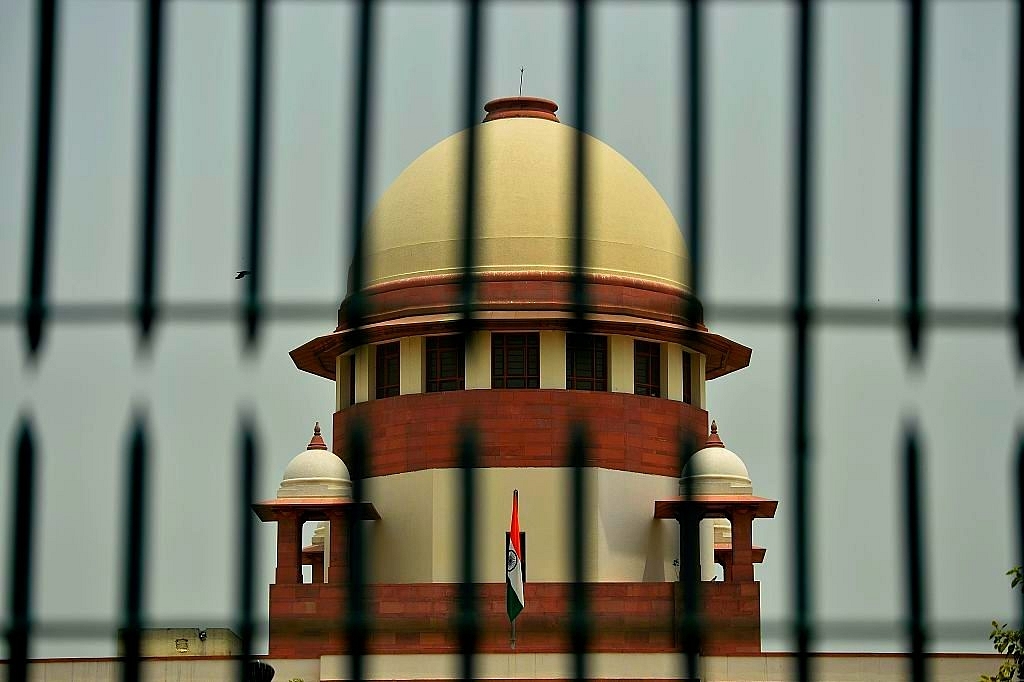Insta
CJI Bobde Terms Delhi Violence On Republic Day As 'Farmer's Visit', Centre Objects

The Supreme Court of India. (SAJAD HUSSAIN/AFP/Getty Images)
The violent incidents across the capital including at the historic Red fort by the protesting farmers on the eve of Republic day was termed as ‘ farmers visit’ by Chief Justice (CJI) S A Bobde on Thursday, reports The Times of India.
Heading a three-judge Bench Chief Justice of India Sharad A Bobde said “Control over certain kinds of news which agitate people to violence and riots is a law and order problem. Preventing it is as powerful as putting up barricades. Preventing instigation is as important as providing lathis to policemen.”
Seeing no wrong in the government taking steps to stop telecast of offensive programs, the Supreme Court drew a parallel with suspension of internet services in the areas that witnessed violence and said “You (the government) stopped internet services (in several areas of Delhi) because of farmers’ visit.”
Immediately the CJI, who heads a bench that hears a bunch of petitions challenging the constitutional validity of three farm laws, said that the use of a non-controversial term by them was deliberate.
The Supreme Court also made some critical comments on the manner in which some journalists and media houses transmitted fake or unverified news that possibly worsened the law and order situation in the capital on Tuesday (26 January).
“These are problems which can arise anywhere. Point is that fair and truthful reporting is not a problem. But it is a problem when the news is projected in a manner to instigate. The pen in the hand of a free speech-armed journalist is like the lathi in the hand of a policeman. How they use their pen or lathi in a law and order situation is integral to maintenance of law and order. And that matters a lot,” the CJI said.
Introducing ElectionsHQ + 50 Ground Reports Project
The 2024 elections might seem easy to guess, but there are some important questions that shouldn't be missed.
Do freebies still sway voters? Do people prioritise infrastructure when voting? How will Punjab vote?
The answers to these questions provide great insights into where we, as a country, are headed in the years to come.
Swarajya is starting a project with an aim to do 50 solid ground stories and a smart commentary service on WhatsApp, a one-of-a-kind. We'd love your support during this election season.
Click below to contribute.
Latest